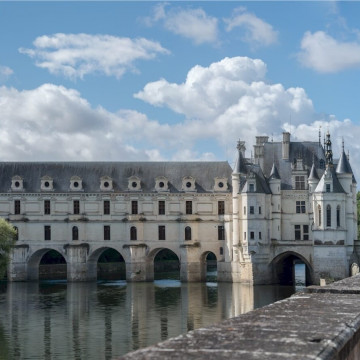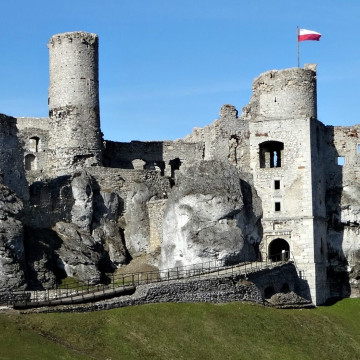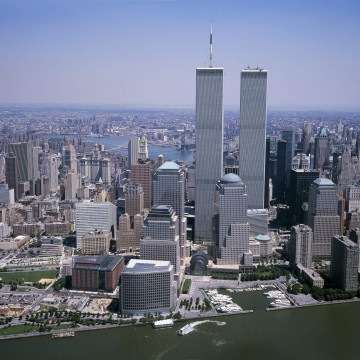Renaissance - architectural style definition
The Renaissance is an architectural style that developed in Europe in the 15th and 16th centuries, characterised by a return to the classical forms and elements of ancient Greek and Roman architecture. The Renaissance was a reaction to the Gothic style that prevailed in Europe from the 12th to 15th centuries and was associated with churches and sacred buildings. Renaissance means 'rebirth' and the style is considered the precursor to modern architecture.
One of the main elements of the Renaissance style is the use of classical forms and ornaments, such as columns and triangular cornices. The Renaissance also used bas-reliefs and sculptures depicting figures from Greek and Roman mythology, which were considered symbols of knowledge and wisdom. Renaissance buildings are usually symmetrical and have a simple but elegant form.
Another important element of the Renaissance style is the use of loggias, or open galleries with balustrades, which served as a place to relax and meet. Loggias are often placed on the first floor of a building and are usually decorated with columns and sculptures. The Renaissance also used ornamental fountains, which were an important decorative element in gardens and courtyards.
The Renaissance was an era in the history of architecture, art and science that took place in Europe between the 15th and 17th centuries. It was a period of revival and revival of interest in ancient culture, which was important for the development of architectural style. Here is some information, precursors and the most popular buildings of the Renaissance:
The Renaissance was a reaction to the Gothic style and was characterised by a strong reference to antiquity, especially to the architecture of ancient Greece and Rome. During this period, attention was paid to proportion, harmony, symmetry and classical elegance of architectural forms. Different varieties of the Renaissance developed, such as the Italian, Flemish, French, English and Spanish Renaissance, with different characteristics depending on the country.
Precursors
Italian architect Filippo Brunelleschi is considered one of the main precursors of the Renaissance. His works, such as the Cathedral of Santa Maria del Fiore in Florence, showed an interest in proportion and harmony.
Most popular buildings
St Peter's Basilica in Rome: This monumental church, designed by many famous Renaissance architects including Donato Bramante, Michelangelo and Gian Lorenzo Bernini, is one of the most important works of Renaissance sacred architecture.
Pitti Palace in Florence: One of the largest and most impressive Renaissance palaces in Italy, designed by Filippo Brunelleschi and later extended by various architects.
Basilica di Santa Maria Novella in Florence: A classic example of Renaissance sacred architecture, designed by Leon Battista Alberti.
Palazzo Rucellai in Florence: Another work by Alberti, notable for its elegant façade with stone tiles and symmetrical layout.
Chateau Chambord in France: A monumental Renaissance royal residence that combines elements of the French Renaissance with Italian inspiration.
Escorial Palace in Spain: Planned by Juan Bautista de Toledo and later extended by Juan de Herrera, it is a symbol of the Spanish Renaissance and one of the most important works of the period.
Wawel Palace in Krakow - this is one of the most important Renaissance buildings in Poland, built between 1499 and 1536 by King Casimir Jagiellon. The palace was the seat of Polish kings and was a symbol of the power and wealth of the state. It is characterised by a beautiful Renaissance architectural style, with rich decoration and ornamentation.
Palazzo Vecchio in Florence - this is one of the most famous Renaissance buildings in Italy, built between 1322 and 1340 by Giuseppe di Poggio. The palace was the seat of the Florentine republic and was a symbol of power and authority. It is characterised by an impressive façade with rich decoration and ornamentation and magnificent interiors with beautiful frescoes and paintings.
Notre Dame Cathedral in Paris - This is one of the most famous Renaissance cathedrals in Europe, built between 1163 and 1345. The cathedral is a symbol of the power and glory of Christianity and is characterised by its magnificent Gothic architecture with rich decoration and ornamentation.
Sagrada Família Cathedral in Barcelona - this is one of the most famous Renaissance cathedrals in Europe, built between 1882 and 2026 by Antoni Gaudí. The cathedral is a symbol of the power and glory of Christianity and is characterised by its magnificent Neo-Renaissance architecture with rich decoration and ornamentation.
These are just a few of the many examples of Renaissance architecture. The Renaissance had a huge influence on the development of European architecture and its influence can be seen in many other buildings across the continent.














